Establishing a Connection with the nano EDGE ENGINE Device
(a) Once the extension is added to the device, right-click on the nE2DeviceExt, go to Actions → Connect.
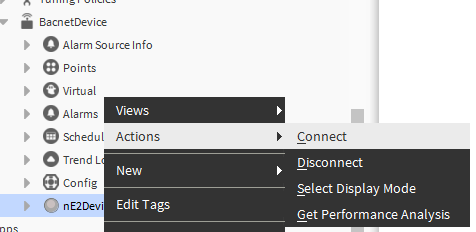
Connect option
(b) A pop-up connection window will open. Fill in the following slots:
IP Address: the nano EDGE ENGINE device address;
Port: iFnet port (by default, 88);
User Name: nano EDGE ENGINE username (by default, admin);
Password: nano EDGE ENGINE user password (by default, admin).
Note: Password must be changed after the first connection to the device, see First Connection and Password Setup.
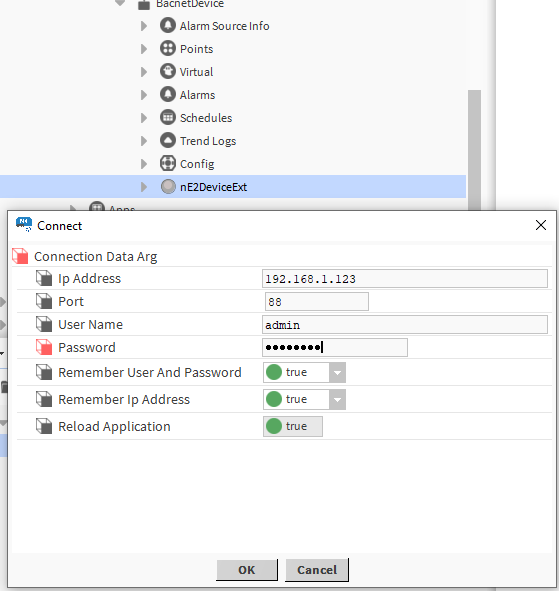
Filling in connection credentials
(c) Click OK to establish connection with the device.
nE2DeviceExt Interactive Connection LED
The nE2DeviceExt icon includes a status LED indicator that visually represents the device's connection state to ensure easy monitoring for users:
gray LED: the device is disconnected,
orange LED: the device is connecting,
yellow LED: the device is connected and the application is loading,
green LED: the device is successfully connected and the application has finished loading.
These color-coded LED statuses provide clear feedback to the customer about the current state of the device.
Once the connection with the device has been established (the green LED indicator is displayed), the following start screen is displayed:
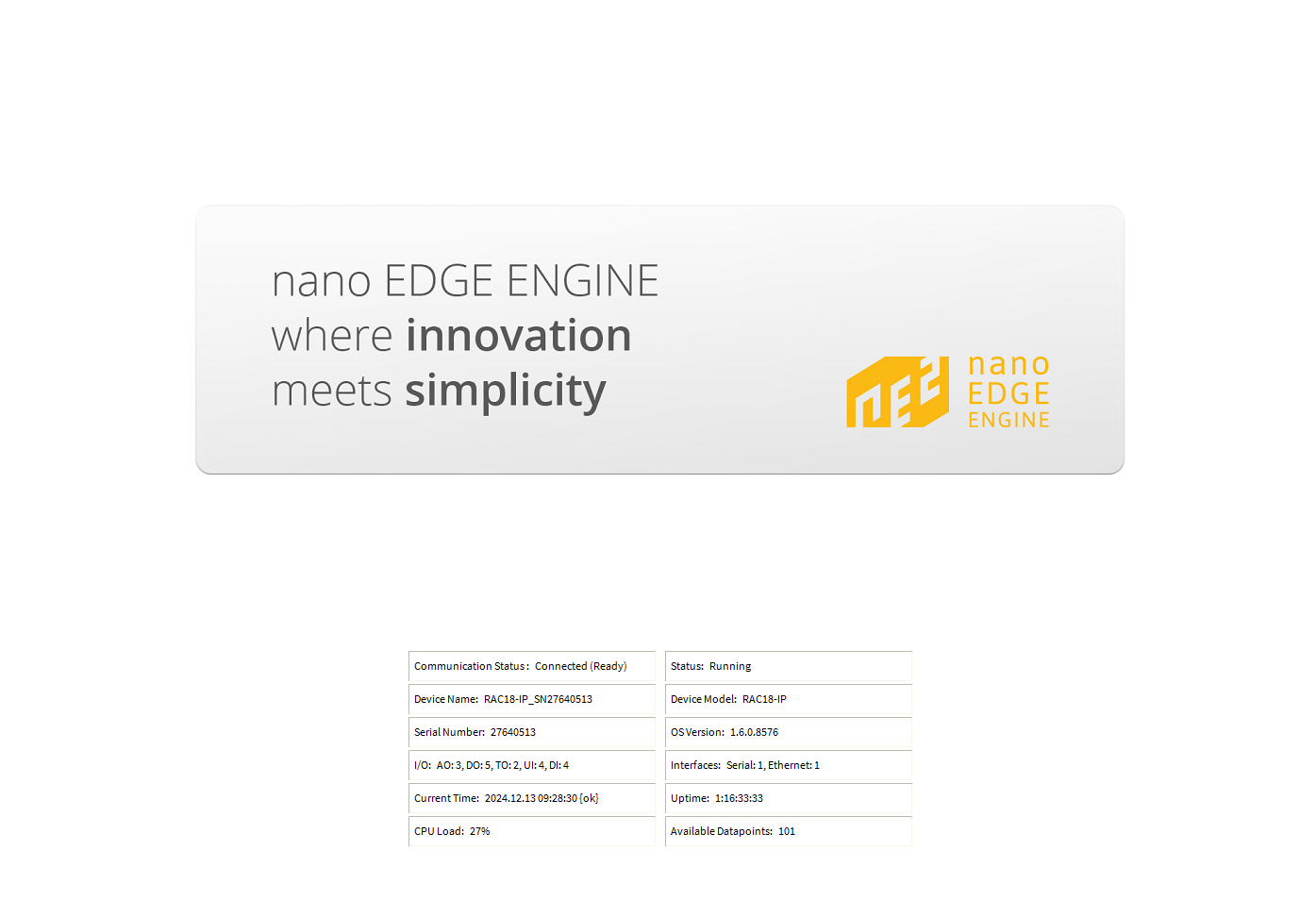
nE2 Link start screen
The start screen shows the following information:
communication status,
device status,
device name,
device model,
serial number,
OS version,
list of I/Os,
interfaces,
current time,
uptime,
CPU load,
available Data Points.
Worth to notice:
If the connection is established for the first time or the extension gets disconnected, the following home screen is displayed:
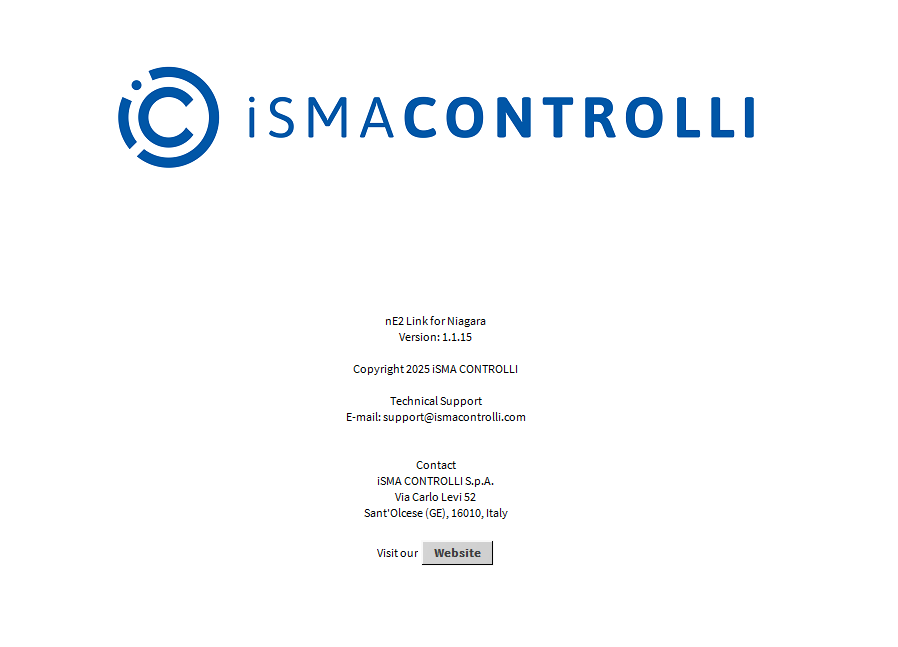
The screen provides information such as:
version of the module;
copyrights;
support;
contact information.
Emergency Mode
The system and application(s) of the nano EDGE ENGINE controllers are stored on an SD card. If the SD card is not detected in the device or the device detects frequent reboots (at least 5 times in 6 minutes), which prevent correct operation, the device enters an emergency mode.
What Causes the Emergency Mode?
No SD card is detected in the device.
The diagnostic process reveals error in I/Os.
Storage limit is exceeded.
Required files are missing during a start-up of the device.
Libraries or files are corrupted.
Operation in Emergency Mode
In the emergency mode, the device operation is limited:
libraries are not loaded;
the SD card configuration is not loaded;
only the System container with limited options (only Logs and Platform components) is displayed in the tree;
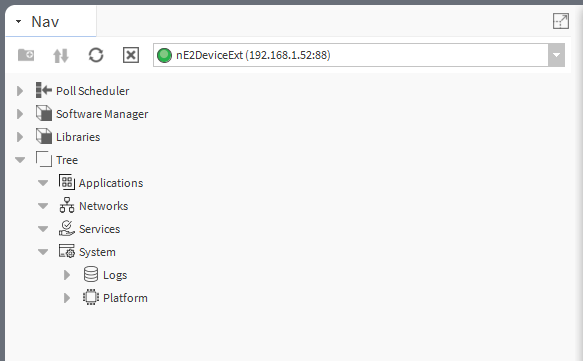
Device tree in the emergency mode
the ALM LED is lit continuously;
the iFnet runs with an IP/port taken from a flash storage;
Note: The flash storage must be synchronized to configuration slots when available.
no authorization or credentials are taken from the flash storage (like IP/port).
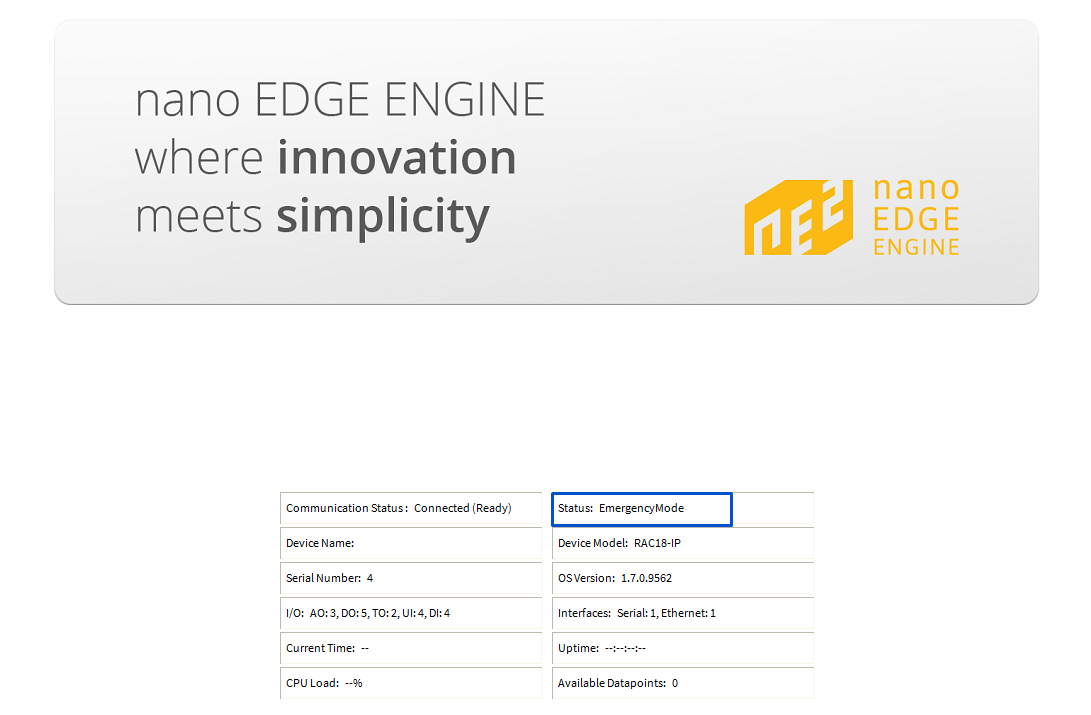
Start screen for a connected device in emergency mode
Possible Actions
When the device enters the emergency mode, take one of a few possible actions:
read logs from the SD card if available;
reboot;
restore to defaults (using the Restore in the System context menu): remove files from the SD card (if available and formatted) excluding only files with IP, port, and credentials (libraries must be also removed);
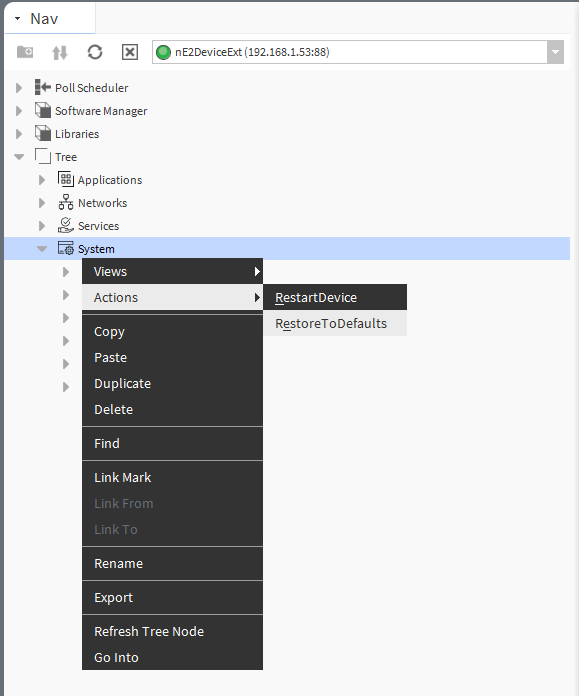
RestoreToDefaults action
restore to factory defaults (restoring with S1 6th DIP switch): format the SD card (if available), restore default credentials, IP, mask, gateway, iFnet port.
